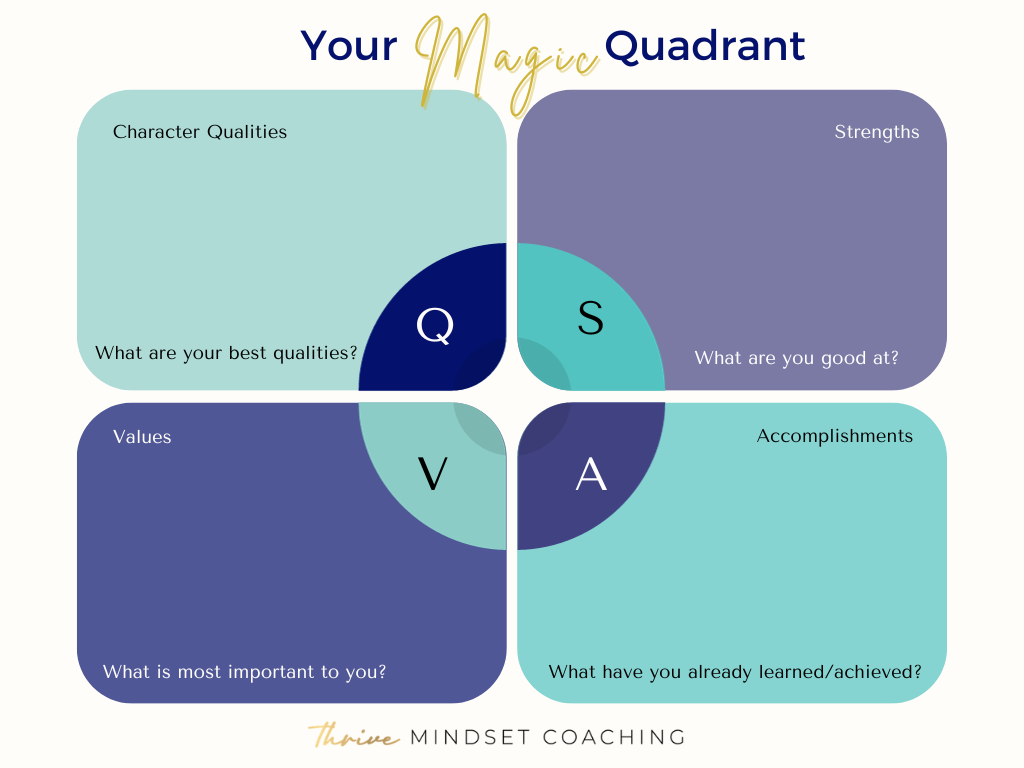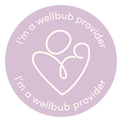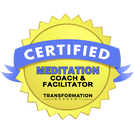AuthorJanel Briggs Categories
All
|
Back to Blog
Wow - it's a big Mindset Monday for me. Celebrating 5 years of Thrive Mindset Coaching! It blows my mind that I have been helping women to transform their mindset and their lives (busting fear and anxiety) for five whole years. This has by far been the most rewarding career I’ve ever had. But it wasn’t something I planned, I literally fell into it after my own life was transformed by an NLP trained mindset coach. 5 years ago, I met a woman who breathed life into me. She showed me I was deserving and worthy of so much more than I was showing up for in my life. She saw a light in me that I didn’t even know existed. My light had been dimmed to dark for so long from “just surviving”. All it took was for 1 person to say “I believe in you, your story can help people” for me to wake up. People (friends and family) probably thought I was crazy; in the 3 years prior to launching Thrive Mindset Coaching, I had quit my lucrative 15-year corporate career and built 3 online businesses that were all flailing... along with my anxiety and mental health. Plus, back then no one even understood what a mindset coach was or did! You want to be what… um ok are you sure?? Early days finding my feet on Instagram Linkedin and You Tube. But, no matter what people thought or said I couldn’t shake the burning desire in me to help support people. To pay forward the gifts of knowledge, belief and hope I had been given. That is why this milestone feels so incredible. As a person who often gave up when conditions weren’t perfect or if the voice of my inner critic told me I was going to fail. “Who are you to do this work? You’re no expert! Your life isn’t perfect.” I NEVER gave up! 5 Valuable Lessons Learned in 5 Years of Coaching:
To my incredible coaching clients, every course participant, journal customer, workshop attendee and my tribe over on Instagram, Linkedin and Facebook - thank you for every video you watched, post or blog you've read! Your presence means the world to me. Cheers to the next 5! Janel Briggs.  About the Author: Janel Briggs is a NLP and Timeline Therapy Practitioner on a mission to support women across Australia and Singapore in overcoming their professional anxieties, imposter syndrome, fears and insecurities to build unwavering confidence and self-belief. Mindset Coaching is about learning how to become fearless and level up your life and career! Connect with Janel on social media via Linkedin or Instagram. Subscribe to my weekly Monday Mindset Magic email and be the first to know about this new product for anxiety relief launching soon!
0 Comments
read more
Back to Blog
Tapping Into the Magic Within You9/10/2023 In my line of work it's common for me to see women grappling with self-doubt. Sadly, this lack in belief can be the major cause of our stress, anxiety, burnout and even depression. We seem to live in a world where women feel there is a persona or invisible achievement list they have to live up to in order to be "worthy" or "valued". Watching the Barbie movie recently, this became even more clear to me. (Have you seen it? What did you think of it?) The gremlin thoughts in our mind often make us feel that if we don't look like THIS, or have THAT, or achieve THIS, then we're failing, "not good enough" or will "never be good enough". It's a pressure that is hard to comprehend and manage. And, if we've experienced knock backs at any stage of our life or career, the journey to quiet the gremlins and get back to self-confidence can be super challenging. But I am here to remind you that this journey back to your true self, can also be incredibly rewarding. Within each and every one of us, there exists a reservoir of magic waiting to be tapped into. Special qualities, characteristics, talents, and brilliance that once recognised helps to light up the world in small or big ways. Learning how to unlock our magic is how we overcome self-doubt. Your magic sparkles from your qualities, strengths, values and known accomplishments. If you're on this journey now - I have created a visual thought starter for you. Take a blank piece of paper, grab a pen, and divide your page into four. Ask yourself each of these questions, and fill in a few dot points for each box. Confidence blooms from deeply knowing and understanding yourself, embracing your unique qualities, and acknowledging your accomplishments. These elements will help you to go onto look at pursuing your passions. Mindset Coaching: The Key to Unleashing More of Your MagicMindset coaching is a powerful tool that empowers women to shift their perspective, challenge their limiting beliefs, and develop the confidence to pursue their goals. Here's how THRIVE mindset coaching can further help you tap into the magic within YOU: 1) Identifying Limiting Beliefs
2) Cultivating Self-Awareness
3) Shifting Negative Self-Talk
4) Setting Empowering Goals
5) Building Resilience
Your inner magic is wating to shine. Remember, you are capable and worthy of achieving greatness! Honour your uniqueness, own your story, and believe in your capabilities. THIS level of radical self-acceptance is where the magic sparkles within you! About the Author: Janel Briggs is a NLP and Timeline Therapy Practitioner on a mission to support women across Australia and Singapore in overcoming their professional anxieties, imposter syndrome, fears and insecurities to build unwavering confidence and self-belief. Mindset Coaching is about learning how to become fearless and level up your life and career! Connect with Janel on social media via Linkedin or Instagram.
Back to Blog
The most important day, is the day you decide your mental health is what matters most. Once you create this mindset shift, you'll find quite a few things get easier to manage:
I think so much of the time, as women, we feel like putting ourselves first is somehow selfish. But, it's not. It's actually healthy! How can you continue to give the world from an empty cup? I certainly couldn't. I was at the rock bottom of my priority list. My cup was so empty when I first recognised my mental health was a problem, I couldn't even muster the energy to get out of bed to feed my 3yo son. (Tap to listen to my story...) Your Mental Health Matters.My first (and biggest!) mindset shift was recognising that I was the only person who could actually change that situation. No one was coming to fix me. No one was coming to save me. I had to be the one who decided enough was enough, it was time for something to change. My wish is that I can empower you with 5 Simple Questions for Checking in on Your Mental Health so that your life doesn’t get to its lowest point, before you decide it’s time for something to change. Let's get into it: 1. How am I feeling emotionally right now? Checking in on your emotional state is an important step in assessing your mental health. Ask yourself: “How am I feeling in this moment?” “How long have I been feeling this way?” In times of external stress, we often deny our emotions, push them down and say, “I’ll deal with that later, I don’t have the time for this”. The funny thing about emotions is… we have to feel them, to heal them. Our emotions will continue to arise, in small or big ways, until we do. And at some stage they could even become super overwhelming - anxiety, anger, frustration, sadness – derailing you from every day life. 2. Am I taking care of my basic needs? Mental health is closely intertwined with our body’s wellbeing. Your body may begin to show symptoms of poor mental health before you even realise it consciously. Muscle tension, pain, feeling restless, headaches, insomnia, appetite changes are all key symptoms. Ask yourself: "Are you getting enough sleep, skipping meals, eating balanced meals, and engaging in regular exercise?" Neglecting your body’s basic needs can contribute to fatigue and the body’s stress. If you are not well slept and nourished, the mind has less resilience and finds it harder to process stress and emotions. 3. Am I managing stress effectively? Are you feeling overwhelmed and constantly under pressure?
Take a look at your coping mechanisms and self-care practices. Health stress management can be as simple as making time to move your body, meditate, journalling your thoughts or connecting with a friend – after a rough day. 4. How are my relationships influencing my mental health? Our relationships and the people in our life play a crucial role in our mental health. Ask yourself “Do you feel supported, valued, and respected?” “Do the people you spend time with uplift you, or drain you?” “Is this connection healthy for me right now”? Perhaps it’s time to create a healthy boundary and/or take some time away from the people who maybe feeling toxic right now, to recoup your energy. 5. Am I engaging in activities that bring me joy and fulfilment? When our external stress is at capacity, we forget about the simple act of doing things that bring us joy. If you are giving out all your energy to work, or other people’s problems – life is going to feel bleak really quickly. Ask yourself: “When was the last time I did something just for the fun of it?” “What is one thing that I could do, to bring more joy into my week?” If you’re looking for ideas for spending quality time with yourself, perhaps try one of these:
Remember, checking in on your mental health is an ongoing process. It’s essential to be honest with yourself and seek support if you notice any persistent concerns or challenges. There is no downside from ever working on your mindset or making some simple chances to your daily habits!  About the Author: Janel Briggs is a NLP and Timeline Therapy Practitioner on a mission to support women across Australia and Singapore in healing their professional anxieties, insecurities and imposter syndrome to build unwavering confidence and self-belief. The goal is to level up your life and career by learning how to to live fearless and anxiety free! Connect with Janel on social media via Linkedin or Instagram.
Back to Blog
As you probably know by now, our LIFE is a journey filled with countless ups and downs, twists and turns, and unexpected challenges within our story. Along this path, we often encounter mental and emotional roadblocks that hinder our progress, cloud our judgment, and leave us feeling stuck. Whether it's confusion about the next step, anxiety about making the right decision, hitting a creative or career block, a lack of motivation, or crippling self-doubt, the mind spins: Where am I going? Am I happy? What am I doing? When will I be happy? These obstacles can be frustrating and overwhelming, making it very difficult to move forward. Previously, before experiencing mindset coaching, I personally would have notched a roadblock up as failure. My mind had been programmed from a young age, that anything less than 100% was failure.
I would be totally stressed out, spiralling into anxiety overthinking all the WHY's and WHAT IF's... ultimately not feeling good enough. Which never EVER helped the situation! When negative emotions and fear rule the situation - it makes EVERYTHING harder. What I've learned since then is that hitting a mental or emotional roadblock does NOT mean I am a failure, or it’s the end of the road. It's actually a fork in the road, a good check in point. Here's why: An emotion in itself is a feeling, and feelings are not facts. The study of NLP (Neuro-Linguistics-Programming) tells us that we experience our first negative emotions in early childhood, typically 0-7 years old. If the negative emotion that we felt for the very first time (like fear, anger, hurt, guilt or sadness) was too confusing for our young mind, or left unresolved, the memory of that experience (and our reaction or response to it) is stored within the unconscious part of our mind. The part of our mind where our habits and patterns are formed, that essentially runs on auto-pilot. The mind then uses this past experience as a reference point for each time that specific emotion is arises in future. Unconsciously filtering new information coming in and present-day experiences on that past trigger point, even though we are no longer a child. The mind unconsciously in a split second says “remember that time you felt scared about X when you were young? This is JUST LIKE THAT”. When in 99% of circumstances it is not. So, our response as adults now to the fear is bigger and can often be out of proportion to the context of the situation in front of us. Have you ever wondered “Why am I so fearful of X, when other people are not? Why do I get so angry and frustrated about X, when so-and-so doesn’t even care? Why can’t I let go of it?” This is why, shown in my example above, I continued to notch up every “No” in my life as a failure. My mind had unconsciously stored an experience of failure when I was 7yo. From that moment I learned to react and respond with fear in a specific way any time there was a possibility of failure. This inhibited me in many ways throughout my adult life. The specific coaching that helped me to realise all of this and release my fear of failure and reprogram the self-limiting belief I had formed that I was not good enough, was the transformational process of TimeLine Therapy®. You can watch my video below to learn more about TLT or read about it here. Now thankfully, when a roadblock presents itself, I like to see the situation as a unique opportunity for inner growth and self-reflection. I am no longer trapped by fear of failure. And this is what I want for you too. It is the reason why just 6 months after working with a Mindset Coach myself in 2017, I went on to retrain and become a NLP and TimeLine Therapy® Practitioner – so I could pay this gift forward to other women just like me. Where do we start when we hit a mental roadblock? Absolutely, we need to honour our emotions and express them. There is a saying I like to remember: “What we resist - will persist”. You can only deny emotions for so long. We must begin to unpack the emotion and the trigger, and find healthy ways to release the emotion. The most powerful way to do this for me is to journal my thoughts. And instead of falling to pieces I stop and ask 3 simple questions to check in: 1. What emotions am I feeling? Why is this situation causing me to feel this way? 2. What are the options in front of me? 3. What is this situation trying to teach me? Or, what can I learn from this? When you are learning you are growing, and you are NOT failing. It's during these challenging moments that we have the chance to zoom out, look for higher perspectives, and tap into our intuition to find the solutions to move forward with ease. Conquering the fear of failure always begins with a process of self-discovery. The inner work for emotional healing may require patience and perseverance, but please know you are not alone! There is guidance and coaching available to support you, whenever you are ready.  About the Author: Janel Briggs is a NLP and Timeline Therapy Practitioner on a mission to support women across Australia and Singapore in healing their professional anxieties, insecurities and imposter syndrome to build unwavering confidence and self-belief. The goal is to level up your life and career by learning how to to live fearless and anxiety free! Connect with Janel on social media via Linkedin or Instagram.
Back to Blog
Our minds are powerful and valuable, but they can be tricky to master when situational anxiety flares up. Some people find they thrive in new experiences and love meeting new people. If you are one of those people, my hat goes off to you! Like many others, embracing the new is something I have had to learn how to love. If you’ve ever tried to support a loved one with anxiety, you’ll know that new events and situations where they are standing an abyss of so many unknown’s and all the uncertainty their fear can be debilitating. When it begins to unfold in front of us it’s like the person is fighting a battle we can’t see. We don’t exactly know what to do, or how to fix it. We want our loved one to listen to reason and be OK. But their fear can be so convincing that they believe something (everything!) bad is going to happen. As a Mindset Coach I want to share with you a proactive tool to help you to help them deescalate the situation, using a concept called reframing fear to excitement. REFRAME FEAR - TO - EXCITEMENT This tool will help your loved one calm the mind and move forward feeling more excited and confident. 1. Listen for the core language of anxiety. Words can be your guide to understanding when a person’s fear starting to building. A tell-tale sign is: WHAT IF (a bad thing happens)? WHAT IF (a negative outcome)? WHAT IF (resistance language "I can't") OR when you hear the person worst case scenario planning. (plan A, B, C, D) 2. Immediately get them to stop and ask them to take a breath. This will halt the mind bringing their awareness back into the body, and circumvent the thought process. 3. Reframe their language. This may take a little practice but start by repeating their “What IF” statement BUT instead of a bad ending you insert a good, or happy ending for them. Shifting the mindset to a positive outcome. “What IF it all turns out better than you could imagine? 4. Make the “unknown” known. Anxiety often sparks due to a fear of the unknown or uncertainty. Ask yourself and affirm what is known. What do we know about this situation? What can we be certain of? What is within our control. 5. Help them to understand that anxiety and excitement have the same vibrational feeling in the body. “You must excited? Imagine all the cool people you are going to meet, and all the fun you will have. Those butterfly’s show up when you get excited right?” 6. Reaffirm the excitement and positive outcome. “I am excited for you! This is going to be so fun. You’ll have a great time. Everyone will love meeting you, you have so much to offer.” EXAMPLE OF THIS TECHNIQUE IN ACTION:Recently, my almost 10yo son joined a new activity after school in Singapore with a group of kids that were older than him on a subject he was lacking in confidence. Even though he originally said he wanted to do this activity, the day of the first group event was looming, and he was beginning to drag his heels saying he no longer wanted to go. I get it, kids making friends and meeting new people can be overwhelming. But as a family we decided a long time ago to always make an effort to give it 1 chance. Then we can decide after that whether we keep it or ditch it. Usually, we keep it – as we are not in the habit of letting our fear of the unknown rule our lives anymore. In the car on the way to there, I could see his mind start to tick, tick, tick. He began to ask:
Immediately I knew as soon as he said “WHAT IF” this was fear talking, not his rational mind. His core language trigger to me was the phrase “What IF” followed by a resistance word (don’t, can’t) and a negative outcome. I could hear his anxiety building and this was a great opportunity to help him de-escalate the fear. I asked him to stop right there and take a breath. We took a big deep breath together. I then proceeded to use the power of positive language to reframe and shift his mind from the most terrible outcome he is imaging, to a good ending. I repeated his “What IF” back to him with a positive outcome:
I then helped him to make the “unknown” known by focusing on a previous experience.
I reminded him that fear and excitement have the same vibrational feeling of alarm in the body. “You must be feeling those excited butterflies in your tummy again. Excited butterflies come when we do fun and exciting things right?” We walked into the building and up the escalator into the activity room, we took the long way to get there - moving the body is very helpful to release stress hormones. We arrived and he turned to me and said “Mum, I am excited about this 😊”. I said, “Yes buddy, I am excited for you too – this is going to be so much fun!”. And it was fun, he had a blast. We pre-framed it to be a good experience. I picked him up an hour later and he raved about the activity and everyone in it. He smashed the activity and cannot wait to go again. We pre-empted for a good ending and primed his mind for fun. He could now feel the excitement buzzing withing his body INSTEAD of the fear. The entire process took us 5 minutes. You can absolutely do this too! With children AND adults. It’s so easy to allow fear to jump into the driver seat and take control of new situations where there are so many unknowns. But every time we do, fear wins. It takes our mind away from the joy and the fun of living in the present moment. When we treat our loved ones who struggle with anxiety with a level of compassion that also takes positive action we can begin to help them to learn how to bring their own anxiety alarm down and enjoy new experiences for what they are, FUN. I hope these suggestions help you support a loved one with anxiety. If you have any questions or comments, please reach out. If you or someone you know is sick of struggling with their anxiety I run a program called “Freedom from Anxiety” for women who are ready to feel more carefree and confident in all areas of their life. To learn more about Janel's Freedom from Anxiety Program 1:1 Coaching head here.  About the Author: Janel Briggs is a NLP and Timeline Therapy Practitioner on a mission to support women across Australia and Singapore in healing their professional anxieties, insecurities and imposter syndrome to build unwavering confidence and self-belief. The goal is to level up your life and career by learning how to to live fearless and anxiety free! Connect with Janel on social media via Linkedin or Instagram.
Back to Blog
A loss of identity and a crash of confidence can feel confronting, challenging and weird (especially when living overseas!). But it is possible to overcome it and get back to you. When I moved to Singapore from Melbourne in 2022, this was not my first rodeo at what they call becoming a “Trailing Spouse”. In 2007, my then boyfriend (now husband!) took a promotion within our company and we moved to the USA for 2 years, our first experience with the expat life. The experience was all parts incredible AND super challenging for me. At the time we were young and free! Dual income with zero responsibilities (remember that?!)- no kids, pets or mortgage! We both worked hard and played hard. We travelled EVERYWHERE, said yes to opportunities, and totally lived it up the experience. But not long after moving cracks began to appear in my mindset and mental health. Trailing spouse depression and identity loss is absolutely a thing, that I had no idea about. It wasn't in the brochure! As a fiercely independent woman of 30 I had NEVER before “given up my life” and put my own aspirations (and needs!) on hold for someone else … who at that time hadn’t even “put a ring on it” yet, as Queen B would say.
I had all the negative feelings, while watching my partner THRIVE in his work and his personal friendships. As you can imagine, this caused a massive strain in our relationship. I had lost my sense of identity, my value and self-worth. I realise now I had put all my happiness eggs in his basket in the relationship, expecting him to be EVERYTHING for me 24/7. I wanted him to fix me! And make me happy! Of course, that pressure was too much. Thankfully, this was a wake up call for me, a turning point where I decided I needed to work on me. I enrolled in University and went back to study, and I enlisted the help of my first NLP Coach and began the journey of understanding who I am, and what I wanted. SIGNS YOU MIGHT BE EXPERIENCING IDENTITY LOSS:
Fast forward 13 years marriage, one child, becoming a Mindset Coach myself and surviving a pandemic - we decide to move to Singapore last year for expat #2. Suffice to say this time I was more prepared. I spent my first few months noticing common themes throughout conversation I was having with other expat women here in Singapore. Pandemic burnout, overwhelm from moving to Asia without a support network, and anxiety arising from uncertainty and changes in working visas were recurring topics at every coffee meet up I joined. I began hearing echoes of the SAME feelings that I used to have. So many women who had moved for their partners career were suffering from an identity loss leaving them with too much time to think and worry about finances in the future. Although very grateful to be in Singapore for the expat experience, frustrations were felt around being unable to work and the fact that they put their life and career on hold to support their other half. This was the catalyst for me deciding to expand my Mindset Coaching business in Singapore. To be able to help these women who are feeling this sense of identity loss. To support those struggling with stress anxiety and ever growing “imposter syndrome” that come with big life changes. New Life Phase A loss of identity can happen at any time it does not relate to age or gender. Experts reveal that it can be triggered when a person enters a new life phase that makes them question their basic understanding of self. Major events such as changing careers, becoming apparent, ending a long-term relationship or moving to a new place can be a catalyst for those uncomfortable feelings where you just feel a bit, well, off. Research shows that relocation is the third most stressful life event possible. On top of this according to an InterNations survey, it's the partner of the expat with the job who tends to be more susceptible to mental health issues such as depression and anxiety and who is negatively affected by the move. Typically, this is because they:
(Tick, tick, tick from my experience way back in 2007!) In the beginning, the expat partner tends to focus on everyone else's happiness and getting the family settled as the priority. Once the transition is complete and all the tasks are done the questions begin to arise what do I do now? What is my purpose here? Where do I fit in? Who am I? Feelings of resentment, frustration, sadness, and hopelessness can set in. How to Shift Your Mindset The first step to navigate any big life change where you're feeling this sense of identity lost is begin to shift your mindset and try to see this journey, or new phase of your life, as an opportunity for personal growth, development and expansion. Here are 6 key points to help you get started: 1. Choose Acceptance Finding a place of acceptance for the circumstances you're in right now is key. Remembering that if your mind is too far in the past thinking about all the things that you don't have, you will continue to feel stuck. If your mind is too far in the future, you'll continue to feel anxious by the uncertainty. Both thought processes make it harder to find happiness and be in the present moment. Do note that acceptance doesn't necessarily mean that you have to surrender or like the situation, but having a willingness to accept your circumstances will release the resistance in the mind that creates undue stress. 2. Create Routine Routine serves as an anchor. Predictable, repetitive routines are calming and help reduce stress and anxiety. Formulating a weekly schedule can help you feel more motivated, organised and productive. How you begin and end your day matters. Are you feeding your mind with positive information and thoughts when you wake up? Are you feeding your body with nourishing food of movement during the day? Are you getting enough sleep? 3. Embrace Exploration Use this time to discover more about who you are:
4. Connect Recognise that you're not alone in your feelings. It can feel daunting to build interpersonal relationships in a new country but connecting with others and sharing your emotions can be very healing. 5. Catch Self-Doubt When negative or unhelpful thoughts creep into your mind, questioning your value or worth, practice catching the thought before it spirals. Understand that not every thought you think is factual, and feelings are not facts. The mind has a protection mechanism that wants to keep you safe. Instead of believing and listening to unkind self-doubt call it out by asking, “Where is the evidence to support this?” or “What is causing me to feel this way?”. 6. Reframe Your Language The words we choose have a positive or negative effect on our mindset. If you believe it's hard and say to yourself “This is hard, I hate this, I don't want this” then it will no doubt be harder for you. Whereas if you use more empowering words such as “I can do this, I can overcome this challenge” the mind will be more open to change and all the possibilities. This article was originally published ANZA (The Australia & New Zealand Association) Magazine Singapore, March 2023 edition (pg 34-35).  About the Author: Janel Briggs is a NLP and Timeline Therapy Practitioner on a mission to support women across Australia and Singapore in healing their professional anxieties, insecurities and imposter syndrome to build unwavering confidence and self-belief. The goal is to level up your life and career by learning how to to live fearless and anxiety free! Connect with Janel on social media via Linkedin or Instagram.
Back to Blog
How many times have you spent Sunday night dreadinggggg Monday morning? That angst beginning to build around 3-4pm as you start to realise how quick the weekend has gone and how soon you have to jump on the hamster wheel again. It may have even happened this week?!? As a Mindset Coach here are 7 things that I have learned to help relieve those Sunday night scaries and shift my mindset heading into the new week: 1. Do a "brain dump" Grab a pen and paper and for 5 minutes and literally dump all the thoughts and to do's you've got circling your head onto paper. If it's on paper these thoughts are more likely to stop circling your mind and making you feel overwhelmed. 2. Create a Weekly Plan So much of the time anxiety creeps in when we are flying by the seat of our pants... all the unknowns of the busy week ahead of us. Make a rough plan for the week, try not to fill every minute of your time, leave some room for flexibility. I also take 10 mins to cross check calendars and school events with my household on Sunday night so that EVERYONE knows what's happening that week. 3. Make Sleep a Priority The first thing I discuss with ALL my new 1:1 clients is sleep habits and how to get better quality sleep. Sleep is 100% a game changer for helping you become emotionally resilient to stress and anxiety. Aim to get into bed earlier on Sunday, with plenty of time to "wind down" - not to be confused with wine down!! Science tells us that every glass of alcohol before bed disrupts 15mins of our REM sleep, REM is the kind of sleep you want lots of to recoup your energy! 4. Turn off work notifications If your anxiety gets triggered by emails, texts or work messages coming in on Sunday night, then DND the work notifications. Everything can wait until you've hit your desk on Monday. There is nothing that will get by rehashing it at 3am when you're trying to sleep. 5. Pack the bags early In order to get 30mins for my morning routine (meditation, journalling, stretching, eating well) every week day, I have to be a little organised and cannot be scrambling to get my family out the door. This just ruins the zen! Packing the bags early and getting everything laid out for the next day 100% helps. If you’re single or don’t have kids perhaps use this time to prep your meals for the week or lay out your gym clothes. 6. Pump up the music Music is the answers to lifting and shifting any mood! Sunday’s nights I always put on a good playlist on Spotify and let the music fill the house with good energy. Whether I’m cooking, meal planning, packing bags or winding down for sleep music always makes me feel good! 7. Remember – everything that needs to get done, will get done No amount of worry and worst-case scenario planning will change the future. And no amount of overthinking the outcome will ever mean that it all goes to plan. Yes, be prepared, but release the pressure and trust that everything that needs to get done will get done. Just like it always does. And, if it doesn’t… life still goes on!  About the Author: Janel Briggs is a NLP and Timeline Therapy Practitioner on a mission to support women across Australia and Singapore in healing their professional anxieties, insecurities and imposter syndrome to build unwavering confidence and self-belief. The goal is to level up your life and career by learning how to to live fearless and anxiety free! Connect with Janel on social media via Linkedin or Instagram.
Back to Blog
Do you feel like you move through each day, month, year at the speed of light... but never actually achieve anything? I've been hearing this a lot from my new clients this year, like no matter what they do they still feel so far behind on those big life goals and dreams. Typically, when I hear a similar thought process a few times, I know it's valuable to share wider. So, I am giving you the exact tool I give to my clients in private coaching to increase their overall sense of well-being when goal-getting. It begins with a simple question: Q: When was the last time you celebrated YOURSELF and how far you have already come? The mind can so easily get stuck on "all the things we haven't done" or are "yet to accomplish". The ego telling us we are unorganised, lazy, and need to be "more productive". Essentially the mind's job is to assess for risk but, as you probably know these thoughts cause us to feel GUILT, perhaps like we aren't good enough. And guilt is 100% the biggest showstopper to any good action! Guilt creates resistance. We are less likely to do the things we want to do, when guilt is in the drivers seat. So, to cut the guilt and create more momentum it's time for a reality check. Here is the tool: At the end of each week take 5 minutes to sit and reflect. Grab a cuppa and a notebook and write down the answer to 3 questions: 1. What went well, or what were you proud of last week? |
|
Stay Connected
Subscribe and be the first to access new blog content news & updates. |

 RSS Feed
RSS Feed























